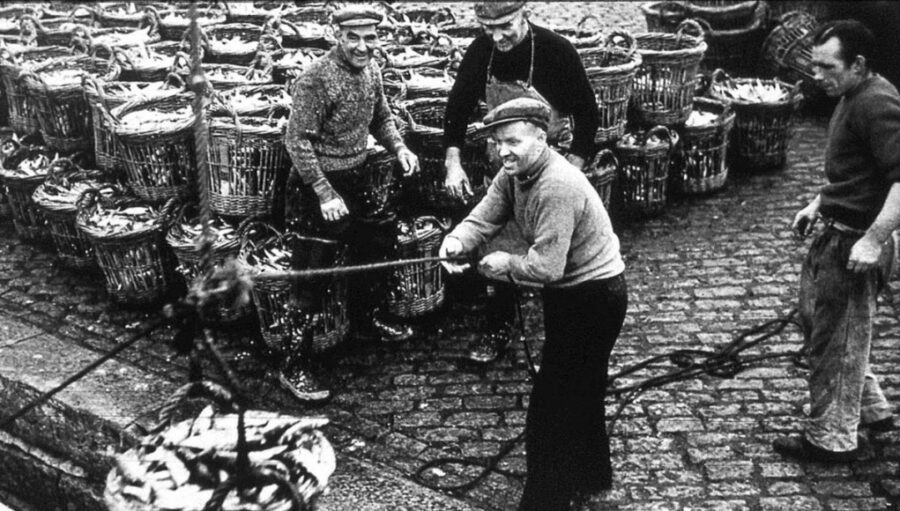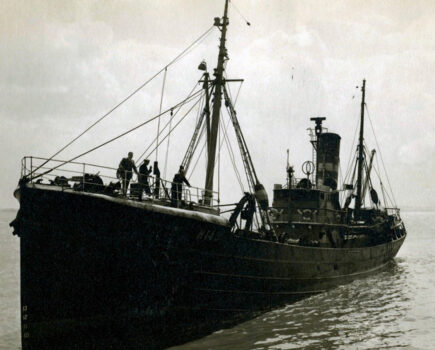At a time when midwater trawlers from Co Down, north-east Scotland and Shetland are fishing herring in both the Irish Sea and North Sea, it is appropriate to select ‘silver darlings’ as the theme for this month’s Fishmarkets of Yesteryear.
For decades, migratory shoals of herring were the mainstay of numerous harbours, from Lerwick to Lowestoft along the east coast of Britain, and from Stornoway to Kilkeel to the west.
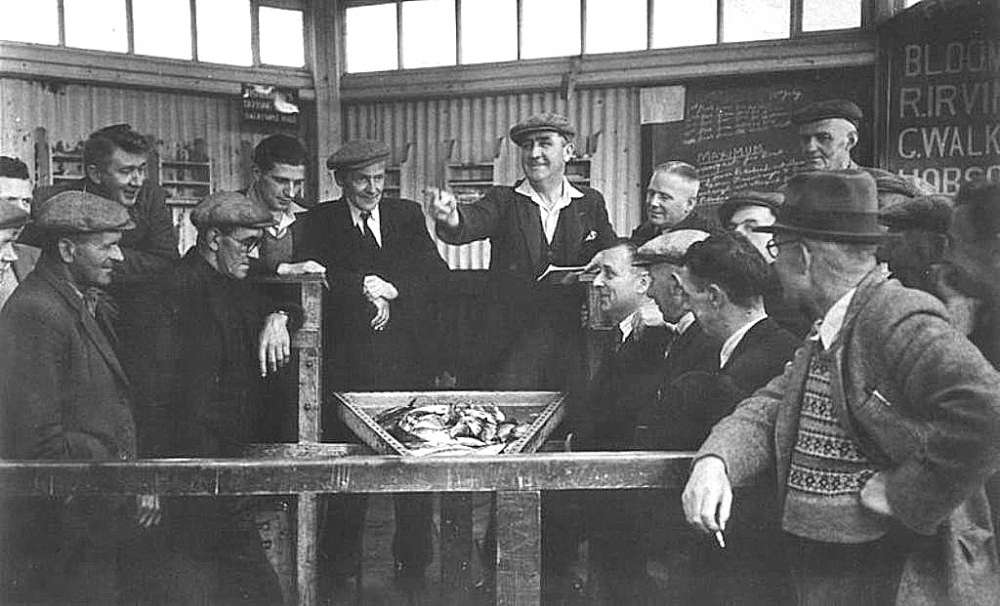
Photograph 2
Vast fleets of sailing boats were gradually replaced by steam drifters and the first motor fishing vessels. At the same time as the style of boat evolved, so too did the method of fishing. Traditional drift and ring nets were gradually replaced by midwater pair-trawls and purse nets.
Traditional wicker fish baskets and the equally familiar caps are to the fore in Photograph 1 (see top), which shows a Scottish crew landing a fine shot of drift-net-caught herring.
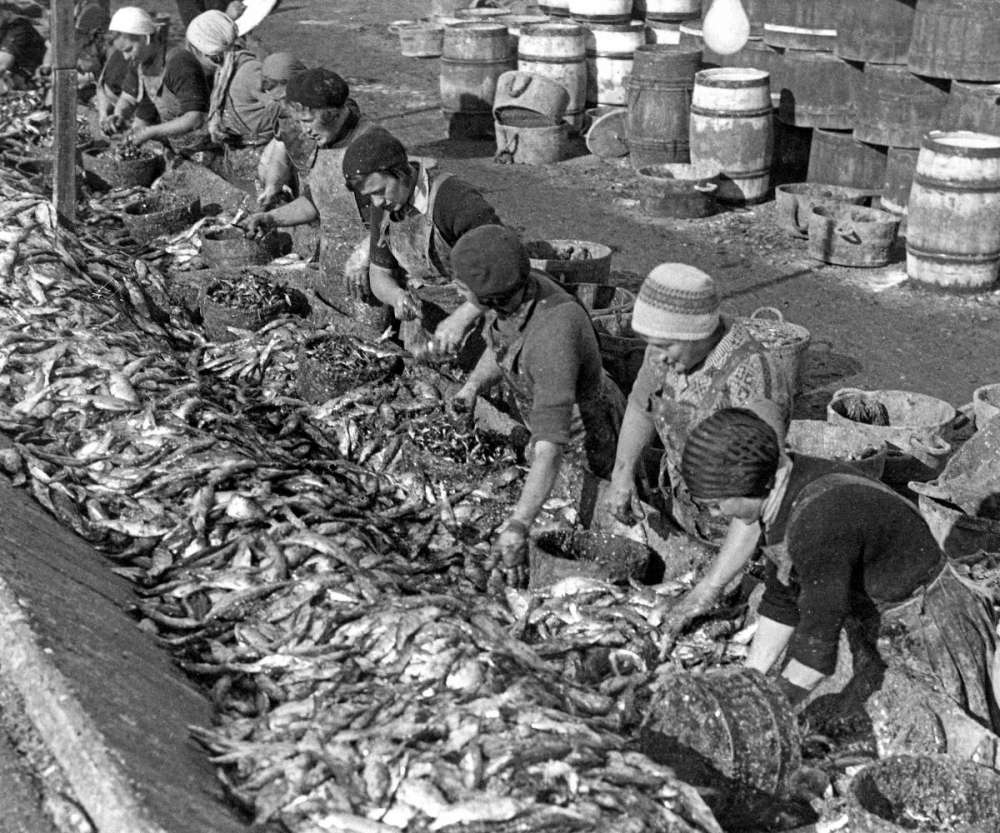
Photograph 3
Sale rings were a central part of herring fishery, when a sample basket of fish was put ashore as soon as a drifter returned to harbour. With a large number of boats frequently returning to port in quick succession, speed was essential to get the sample to the sale ring, where buyers with train schedules to meet were usually prepared to offer slightly more for the first shots landed, depending on the quality of the fish. Photograph 2 shows auctioneer Hugh Patience selling a herring sample at the Fraserburgh sale ring in 1952.
The vast majority of herring was gutted and packed in traditional barrels for export to a number of countries across the North Sea, including Germany, Holland and Russia. This labour intensive work was carried-out by herring-girls. Usually working in teams of three – two gutting and one packing – these women worked long hours, in often freezing conditions, in the herring curing yards, as shown in Photograph 3, taken at Lowestoft in 1932.

Photograph 4
In Photograph 4, the Fraserburgh motor drifter Lilacina BF 395 is landing a shot of herring at Lowestoft, boxed in the distinctive aluminium trunks that were widely used in the early 1960s. Lilacina was built at Fraserburgh in 1953 for Gardenstown skipper William Nicol. In later years Lilacina worked as one of Bdellium’s bum-boats, as the purse net fishery started to replace drift netting.
Herring fishing in the Irish Sea usually peaked in August and September, when a large fleet of boats from north-east Scotland and Co Down would frequently land into Peel and Douglas, where the freshly caught herring were processed and smoked locally into the highly renowned Isle of Man kippers. Photograph 5 shows a typical mix of boats landing herring in Douglas harbour in September 1979.
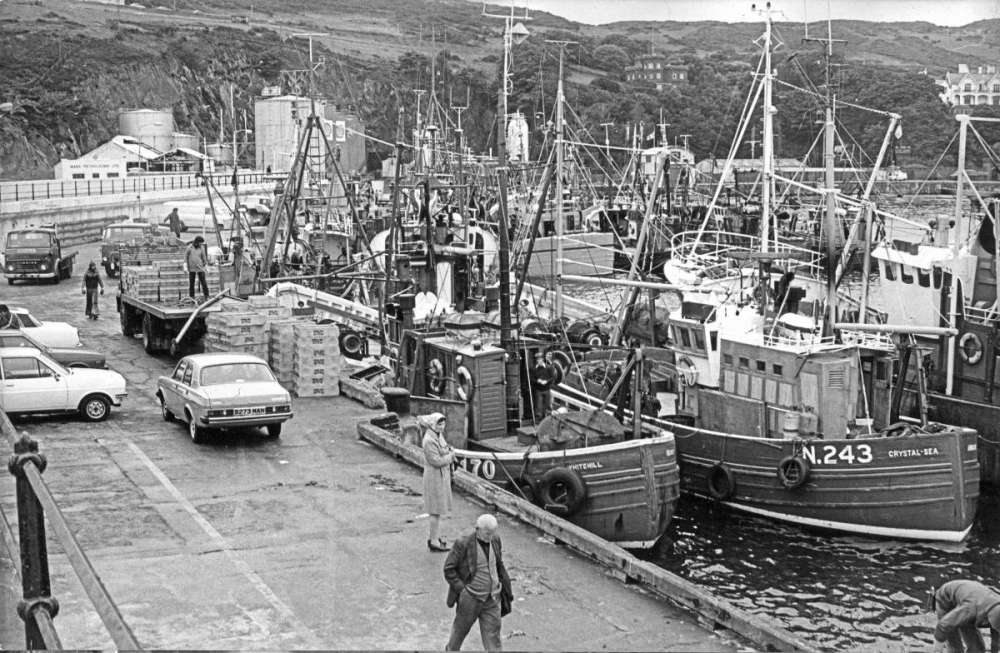
Photograph 5
In each Fishing News issue, we look back at certain times in commercial fishing history. Looking at a particular year – such as our looking back feature on 1925 – or a type of fish. Each week, we will bring you another nostalgic look at the industry complete with images from our extensive archives.

